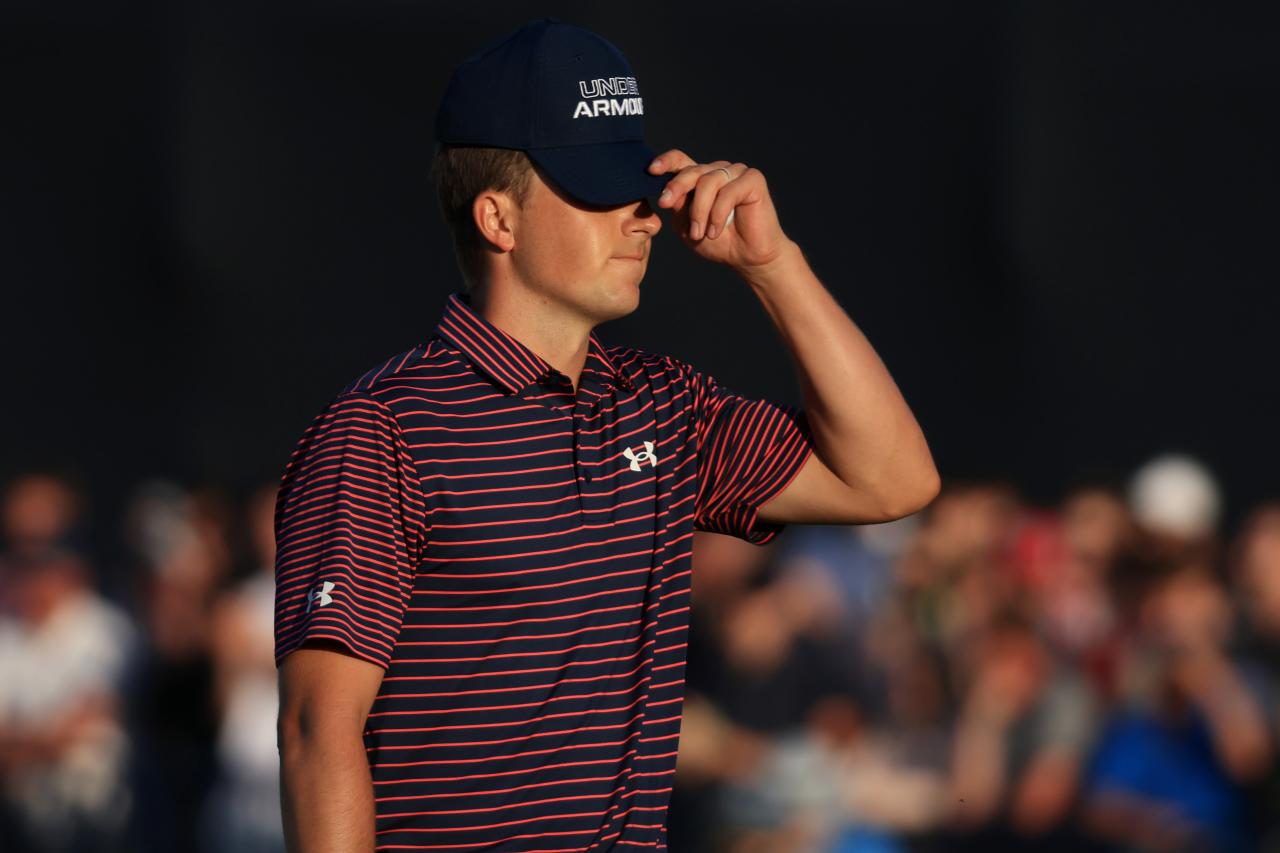Matthew Lewis/R&A
By John Huggan
SANDWICH, England—During the four years that have passed since Jordan Spieth left merry olde England clutching the claret jug, the now 27-year old Texan never quite moved alongside Rory McIlroy at the top of the “Why isn’t he winning big ones?” league table. While the Northern Irishman’s struggles to find a fifth major victory have often been perplexing and mysterious, it was way more obvious why Spieth was battling to add to his tally of three Grand Slam titles.
Which is not to say regular bouts of angst and anguish must surely have been an unwanted part of his daily routine as Spieth descended as low as 92nd in the world. But throughout that decline it was clear that his scoring issues were always technical, never psychological. So it was that his innate ability to win from a challenging position went largely unquestioned. His real problem was getting into that position in the first place. Genuinely slumping and just not getting the job done are different things. When and if the full swing improved, few doubted Spieth’s natural talent would be the final building block in his return to the top.
He’s not quite there yet, of course. Not while he remains ranked (just) outside the world’s top-20 golfers. And not this week either. With a round to play at Royal St. George’s, Spieth is nine-under par and three-shots off Louis Oosthuizen’s pace—and two behind Collin Morikawa—after three-quarters of the 149th Open Championship.
No matter. Spieth’s main challengers will stand on the first tee with 18 holes to play in the almost-sure knowledge that the 2017 Open champion is unlikely to go away. Although the bogey-bogey finish Spieth perpetrated on Saturday evening was a long way from the positive note he would have wished to carry with him into the gloaming. Those late stumbles surely hurt. And hurt deep.
Definitive confirmation of that conclusion is not forthcoming, by the way. Emerging from the scorer’s hut, the normally amiable soul displayed a rarely seen petulance. Even with 90-minutes or so available for post-round practice, all requests to discuss his day out on the links were rebuffed as Spieth stomped off in the general direction of the practice putting green. More typically of his normally genial post-round nature, he found time on the way to stop for a couple of selfies with passing fans.
Despite those behavioral lapses, it would be folly to write off Spieth’s chances. True, he might not win. But one of those other guys is still going to have to beat him. And beat him down the back-nine in a major championship, the time when we really get to know who can really play and who really can’t.
Spieth is so good on links courses because the strongest parts of his game—scrambling and scoring—best answer the hardest questions posed by seaside golf. Mental serenity is hard to maintain when the fairways are rumpled, the pot bunkers play way larger than their actual size, the rough is dense and the greens are both slow and sloping. But no one handles that stuff better than the Dallas native—most of the time, anyway.
Remember that incredibly bogey-five Spieth made via the practice range on the 13th at Royal Birkdale back in 2017? On the evidence of his first 52 holes this week, that endlessly creative formula was for long enough working just as well 325 miles further south at St. George’s. As the seven bogeys Spieth has made over the last three days illustrate, the game he is playing is hardly error-free. But it is exactly the sort of golf that carried him to that memorably dramatic victory over Matt Kuchar 48 months ago. The only doubt now is the state of mind that provoked that dash to the practice green.









